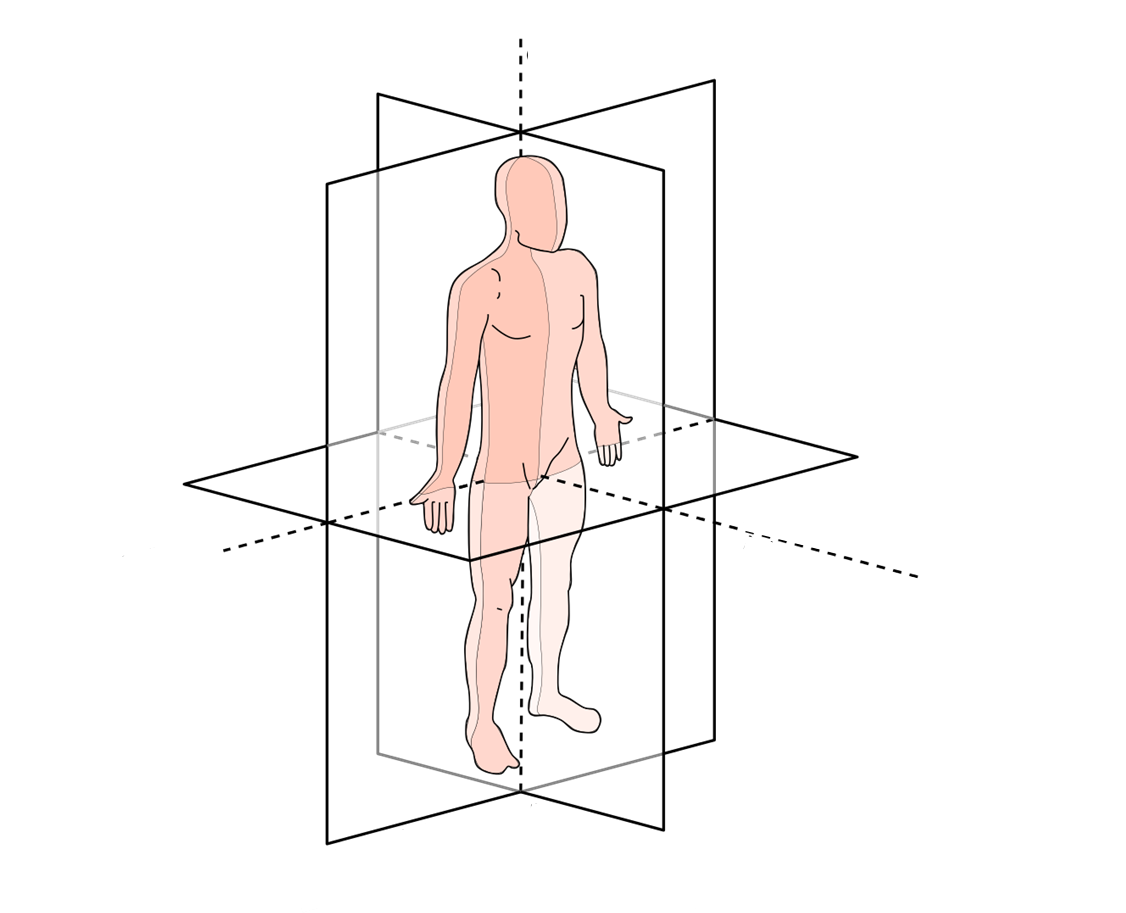This test is run by .
Note that your final mark will not be saved in the system.
Note that your final mark will not be saved in the system.
1.1.c. Movement analysis (planes of movement and axes of rotation) GapFill
Target Level
4-5
Running Total
0
0%
Attempt
1 of 3
You must fill all the gaps before clicking ‘Check Answers!’

Whenever a sporting movement is being completed by the body, it is acting in one of three planes: frontal, transverse or . Let's explore these planes a bit further.
- The plane divides the body into front and back, which means that any sideways motion in line with this plane occurs in this plane. Movements such as adduction and are the common movements which take place in this plane, e.g. performing a cartwheel or a side kick in taekwondo.
- The plane divides the body into upper and lower parts, which means any rotational motion occurs in this plane. A golf drive is a sporting example of a movement which takes place in this plane.
- The plane divides the body into a right side and a left side, which involves forwards and backwards motions. Extension and flexion are the common movements that take place in this plane, e.g. performing a somersault.
Furthermore, movements also occur around one of three axes. These are called the axes of rotation. There are three axes of rotation: longitudinal, frontal and .
- The axis travels through the head down to the feet. Rotational movements occur around this axis, e.g. when an ice skater is spinning on the spot, they are rotating around this axis and in the transverse plane.
- The axis passes through the body from the rear to the front. Sidewards movements occur around this axis, e.g. the cartwheel, which rotates the whole body from left to right (or vice versa).
- The axis passes through the body from right to left. Forwards and backwards rotational movements occur around this axis, e.g. a gymnast or diver performing a backwards somersault.